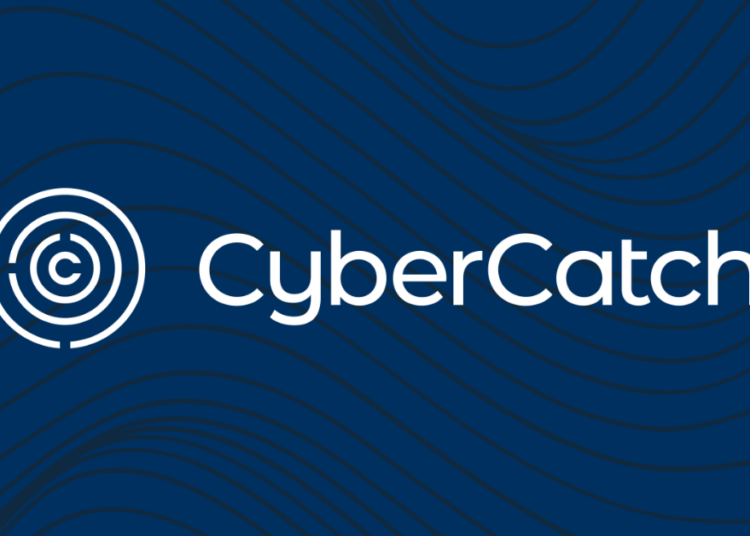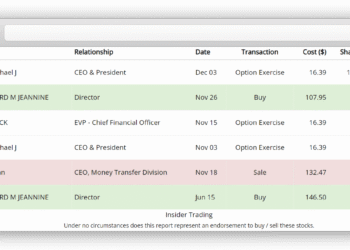Table of Contents
- Understanding the 2025 Threat Landscape: Why Every Small Business Is a Target
- Building a Resilient Foundation: A “NIST-Lite” Framework for SMBs
- Choosing Your Defense: An Unbiased Comparison of In-House vs. Managed Services
- The SMB Cyber Playbook in Action: Real-World Case Studies
- A Practical Toolkit: Your Downloadable Cybersecurity Resources
- Conclusion
- Frequently Asked Questions (FAQ)
The notification flashes across your screen: “Your files have been encrypted.” Or worse, you get a call from a client asking why their sensitive data is for sale on the dark web. For a small business owner, this isn’t just a technical problem; it’s a direct threat to survival. Suddenly, payroll, client lists, and your hard-earned reputation are on the line.
Most cybersecurity advice seems designed for large corporations with dedicated IT departments. It’s a confusing storm of jargon, expensive tools, and impractical strategies. This article is the antidote. We’ve designed this as a jargon-free, step-by-step “business playbook” for the overwhelmed, under-resourced owner searching for effective cybersecurity solutions for small businesses.
This guide synthesizes years of experience helping small businesses navigate the threat landscape. We will cut through the noise to deliver a clear, budget-conscious roadmap—from identifying critical risks to creating an incident response plan that ensures your business can withstand and recover from an attack. We will show you how to build a resilient defense that protects your bottom line and gives you peace of mind.
Understanding the 2025 Threat Landscape: Why Every Small Business Is a Target
A common and dangerous myth among small business owners is, “We’re too small to be a target.” The reality is that obscurity is not a security strategy. Modern cybercriminals don’t hand-pick their victims one by one; they use automated tools that relentlessly scan the internet for vulnerabilities. These bots don’t care if you have five employees or five thousand. If you have a weakness, they will find and exploit it, making every SMB a potential target.
The Top Financial Threats: Ransomware and Business Email Compromise
The two threats that cause the most direct financial damage to small businesses are ransomware and Business Email Compromise (BEC). In simple business terms, ransomware is a type of malicious software that locks up your critical files—customer data, financial records, operational documents—and demands a hefty payment for their release. It can halt your operations in an instant.
Business Email Compromise (BEC) is a more deceptive threat. Criminals impersonate a trusted figure, like the CEO or a vendor, and trick an employee into sending money to a fraudulent account. These scams are sophisticated and prey on human trust, often resulting in devastating financial losses. The U.S. Small Business Administration (SBA) offers an excellent guide on how to strengthen your cybersecurity against these and other common threats, emphasizing the need for robust small business internet security.
The Rise of AI-Powered Phishing
The phishing emails of the past, riddled with typos and grammatical errors, are becoming less common. Today, criminals are leveraging artificial intelligence to craft hyper-realistic scam emails and messages. AI can analyze a person’s public data and communication style to create a perfectly tailored message that is incredibly difficult to spot. For example, it could generate an email that convincingly mimics your top supplier’s tone and references a recent, real project, making a fraudulent invoice request seem completely legitimate. This evolution demands better defenses and more sophisticated cybersecurity services for small business that go beyond basic spam filters.
Building a Resilient Foundation: A “NIST-Lite” Framework for SMBs
When facing complex threats, the natural reaction is to start buying tools. But without a plan, this leads to wasted money, security gaps, and a false sense of protection. The most effective approach is to use a structured framework. Government-grade security frameworks from organizations like the National Institute of Standards and Technology (NIST) and CISA may sound intimidating, but their core principles can be simplified into a powerful, practical plan for any size business.
The 5 Core Functions of Cyber Resilience
At its heart, a strong cybersecurity strategy is about answering five simple questions. We’ve translated the official NIST Cybersecurity Framework into a jargon-free checklist to provide a clear roadmap for cybersecurity solutions for small businesses. This approach is foundational to the philosophy of how we help businesses at CyberCatch, focusing on accessible, comprehensive security. You can learn more about us and our commitment to this model. The NIST Quick Start Guides provide an excellent, detailed resource that forms the basis of this simplified model.
- Identify: What do I need to protect? This means taking inventory of your critical assets—the hardware (laptops, servers), software (accounting programs, CRMs), and data (customer information, financial records) that are essential to your business operations.
- Protect: How can I defend my assets? This is where you implement safeguards. It includes technical controls like antivirus software and firewalls, as well as non-technical measures like employee training on spotting phishing and creating strong password policies.
- Detect: How will I know if something goes wrong? You can’t stop every attack, so you need a way to spot suspicious activity early. This could involve monitoring network traffic or using software that alerts you to unusual login attempts.
- Respond: What is my plan when an incident occurs? This means having a pre-defined incident response plan that outlines exactly what to do, who to call, and how to communicate during a breach to minimize damage.
- Recover: How will I get back to business? This function focuses on restoring operations quickly. The cornerstone is having reliable, tested backups of your critical data and systems so you can recover without paying a ransom.
Why a Simple Framework Maximizes Your ROI
By following this five-function framework, you stop guessing and start strategizing. The “Identify” step ensures you know exactly what your most valuable assets are, so you can focus your limited budget on protecting what matters most. This prevents you from overspending on flashy tools that don’t address your specific risks. A structured approach ensures every dollar you invest in security delivers the maximum return by systematically reducing your most significant vulnerabilities first.
Choosing Your Defense: An Unbiased Comparison of In-House vs. Managed Services
One of the biggest decisions for a small business owner is whether to manage cybersecurity in-house or to hire an outside expert. There is no single right answer; the best path depends on your specific budget, resources, technical comfort, and the type of data you handle. Let’s break down the options to help you make an informed decision.
The DIY & In-House Approach: Pros, Cons, and Best-Fit Scenarios
The Do-It-Yourself (DIY) or in-house approach involves using your existing team (which may just be you) to manage security.
- Pros: The primary advantage is the low initial cost. You can leverage a wide array of excellent free tools and services to build a solid foundation. This approach gives you complete control over your security stack.
- Cons: The biggest risk is what you don’t know. Cybersecurity is a complex, fast-moving field, and knowledge gaps can leave you exposed. It is also extremely time-consuming to research, implement, and monitor security tools effectively, taking you away from core business activities.
- Best-Fit Scenarios: This path can work for very small businesses with minimal sensitive data, a tight budget, and a tech-savvy owner or employee who has the time and willingness to learn. For those exploring this route, CISA provides a fantastic catalog of Free Cybersecurity Services and Tools that offer some of the best small business internet security options at no cost. You will also want to investigate the best network security for small business, which often starts with a robust firewall and secure Wi-Fi configuration.
Partnering with a Managed Security Service Provider (MSSP)
A Managed Security Service Provider, or MSSP, acts as your outsourced, expert cybersecurity team for a predictable monthly fee. They handle the monitoring, detection, and response, freeing you to focus on your business.
These cybersecurity services for small business are designed to provide enterprise-grade protection without the need for an in-house team. An MSSP will typically manage your firewall, monitor your network for threats 24/7, respond to incidents, and provide regular reporting on your security posture. This partnership offers access to expertise and advanced technology that would be prohibitively expensive to acquire independently. For many SMBs, this is the most cost-effective way to achieve a mature security program.
Decision Framework: Which Path Is Right for Your Business?
Ask yourself these four questions to determine the right path for you:
- What is your budget?
- Very Low: The DIY path using free tools is your starting point.
- Moderate/Flexible: An MSSP becomes a viable and often high-ROI option.
- What kind of data do you handle?
- General Business Data: A well-configured DIY setup might be sufficient.
- Sensitive Data (PII, Financial, HIPAA): The expertise and compliance support of an MSSP are strongly recommended to manage the higher risk and regulatory requirements.
- How many employees do you have?
- 1-10: DIY is manageable if you have the time and skill.
- 10+: The complexity grows with each employee. The efficiency of managed security services for small business becomes more compelling as you scale.
- What is your personal technical comfort level?
- High: You enjoy setting up and managing technology. The DIY approach could be a good fit.
- Low: You want to focus on your business, not on IT. Partnering with an MSSP is the clear choice for peace of mind.
The SMB Cyber Playbook in Action: Real-World Case Studies
Theory is one thing; results are another. A proactive, well-structured security plan delivers tangible value and protects businesses from catastrophic failure. These anonymized case studies demonstrate our direct experience in helping businesses build resilience.
Case Study 1: A Small Retailer Survives a Ransomware Attack
- Problem: A 15-employee retail business arrived one morning to find all their server files, including inventory and customer records, encrypted by ransomware. A note demanded $50,000 for the decryption key. Their operations were completely frozen.
- Solution: Six months prior, we had helped them implement a “NIST-Lite” framework. This included creating an incident response plan and, crucially, setting up a robust, automated backup system that stored encrypted copies of their data both locally and in the cloud, isolated from the main network.
- Result: Instead of considering the ransom, they executed their response plan. They disconnected the infected systems, notified their team, and initiated the data recovery process. Within four hours, they had restored all critical data from the previous night’s backup. The total cost was a few hours of downtime, not a crippling five-figure ransom or the complete loss of their business.
Case Study 2: A Consulting Firm Avoids a Six-Figure Mistake
- Problem: The CFO of a 30-person consulting firm received a sophisticated AI-phishing email. It appeared to come directly from the CEO, using her exact tone and referencing an ongoing confidential acquisition deal. The email urgently requested a wire transfer of $120,000 to a “new vendor” to close the deal.
- Solution: As part of their partnership with us as their MSSP, the firm’s employees had undergone mandatory quarterly security awareness training. The CFO, despite the email’s convincing nature, recognized the red flags of urgency and an unusual payment request. Following the protocol from his training, he did not reply to the email but instead called the CEO directly to verify.
- Result: The scam was immediately identified and reported to their MSSP for analysis. The attempted wire fraud was thwarted, preventing a $120,000 loss. This single incident demonstrated an immediate and massive return on their investment in training and managed services.
A Practical Toolkit: Your Downloadable Cybersecurity Resources
This guide is a playbook, and every good playbook comes with tools to help you execute the plan. We’ve created two high-value resources to empower you to take immediate, effective action.
Download: The 1-Page Incident Response Plan Template
When a crisis hits, you don’t have time to read a 50-page manual. This simple, fill-in-the-blank plan tells you exactly who to call and what to do in the first 24 hours of a cyberattack. It ensures a calm, organized response that minimizes damage and accelerates recovery. Download our free Incident Response Plan Template and fill it out today.
Download: The Smart Cybersecurity Budgeting Worksheet
How much should you spend on security? This simple spreadsheet helps you allocate funds effectively based on your unique risks and the “NIST-Lite” framework discussed in this guide. It transforms budgeting from a guessing game into a strategic exercise, ensuring every dollar is put to its best use. Get the Smart Cybersecurity Budgeting Worksheet to start planning your investments wisely.
Conclusion
Cyber resilience is not about buying every complex tool on the market or becoming a technical expert overnight. It is about having a practical, repeatable plan that is right-sized for your business. This guide provides that plan—from understanding the real-world threats you face, to building a defense using a simple framework, to choosing the right support model and preparing for a crisis. Protecting your business is not out of reach. With this playbook, you can move from feeling overwhelmed to being in control of your digital destiny. You can build a business that is not only prepared for an attack but is resilient enough to thrive in spite of it.
Ready to build your resilience plan but want an expert guide? Schedule a free, no-obligation consultation with our SMB security specialists today.
Frequently Asked Questions (FAQ)
Question 1: What is the most important first step in small business internet security? The most important first step is the “Identify” function from the NIST framework. You must create an inventory of your critical data, software, and hardware. You cannot effectively protect what you don’t know you have. This foundational step informs every other security decision you make.
Question 2: How much should a small business realistically budget for cybersecurity solutions? There is no magic number, as it depends on your size, industry, and risk profile. However, a common benchmark is anywhere from 3% to 6% of your IT budget, or a set cost per employee per month. Using a budgeting worksheet to align spending with your specific risks is a more effective approach than relying on generic percentages.
Question 3: Are managed security services for small business worth the cost if I only have 10 employees? For many 10-employee businesses, they are absolutely worth it. Consider the cost of the service versus the potential cost of a data breach, which can easily run into tens or hundreds of thousands of dollars in recovery, fines, and lost business. An MSSP provides 24/7 expert monitoring and access to advanced tools that would be far more expensive to staff and procure in-house.
Question 4: What is the single biggest cybersecurity mistake small business owners make? The biggest mistake is the “it won’t happen to me” mindset. This leads to underinvestment in security, a lack of employee training, and the absence of a basic incident response plan. Believing you are too small to be a target is a gamble that rarely pays off.
Question 5: How can I tell if my business has already been compromised? Some signs are obvious, like a ransomware note. Others are subtle. Look for unusual activity like strange logins on user accounts, unexplained slowness on your network, antivirus software being disabled unexpectedly, or seeing your company data on public data breach notification websites. A professional compromise assessment is the most definitive way to know for sure.












